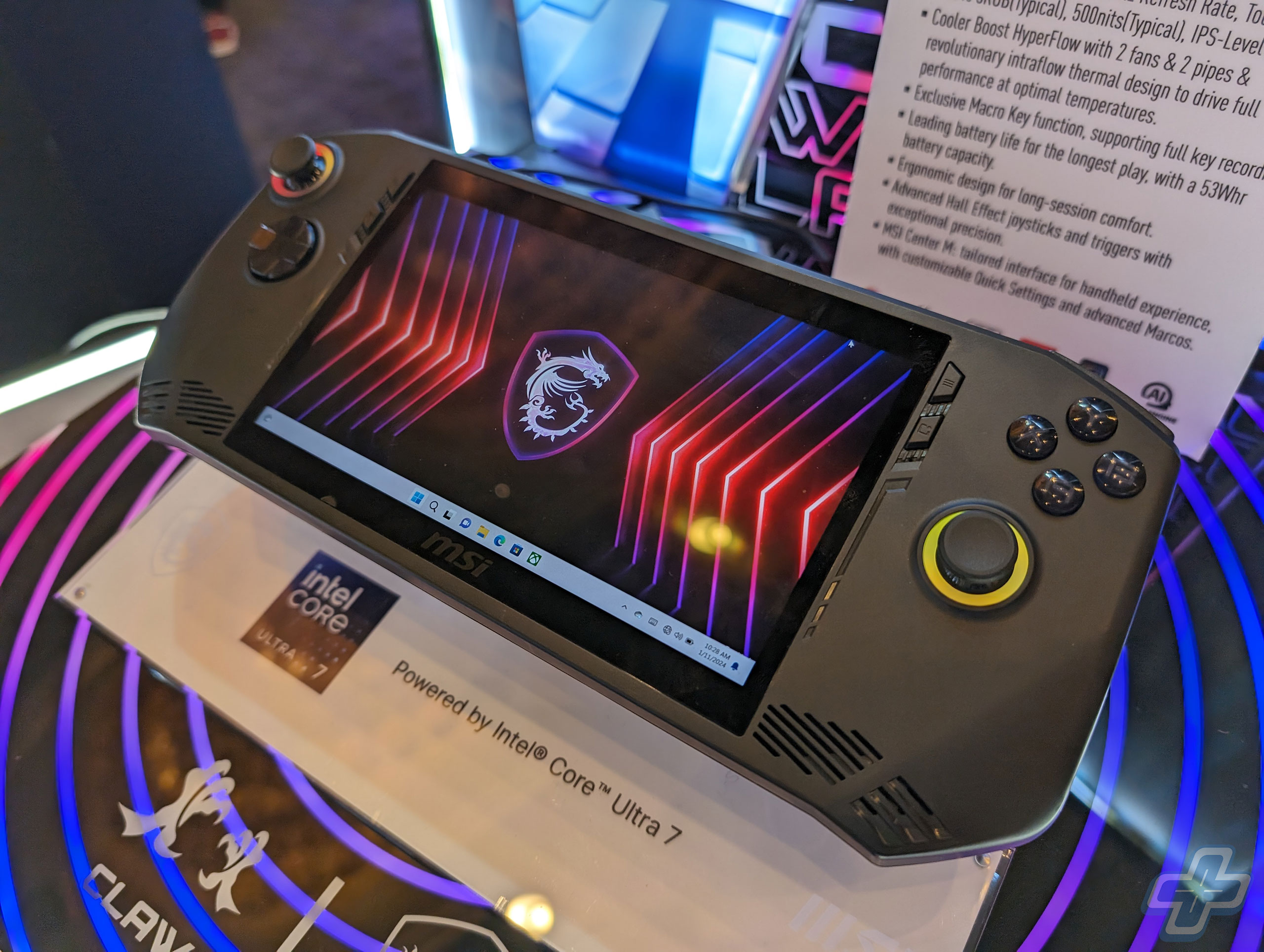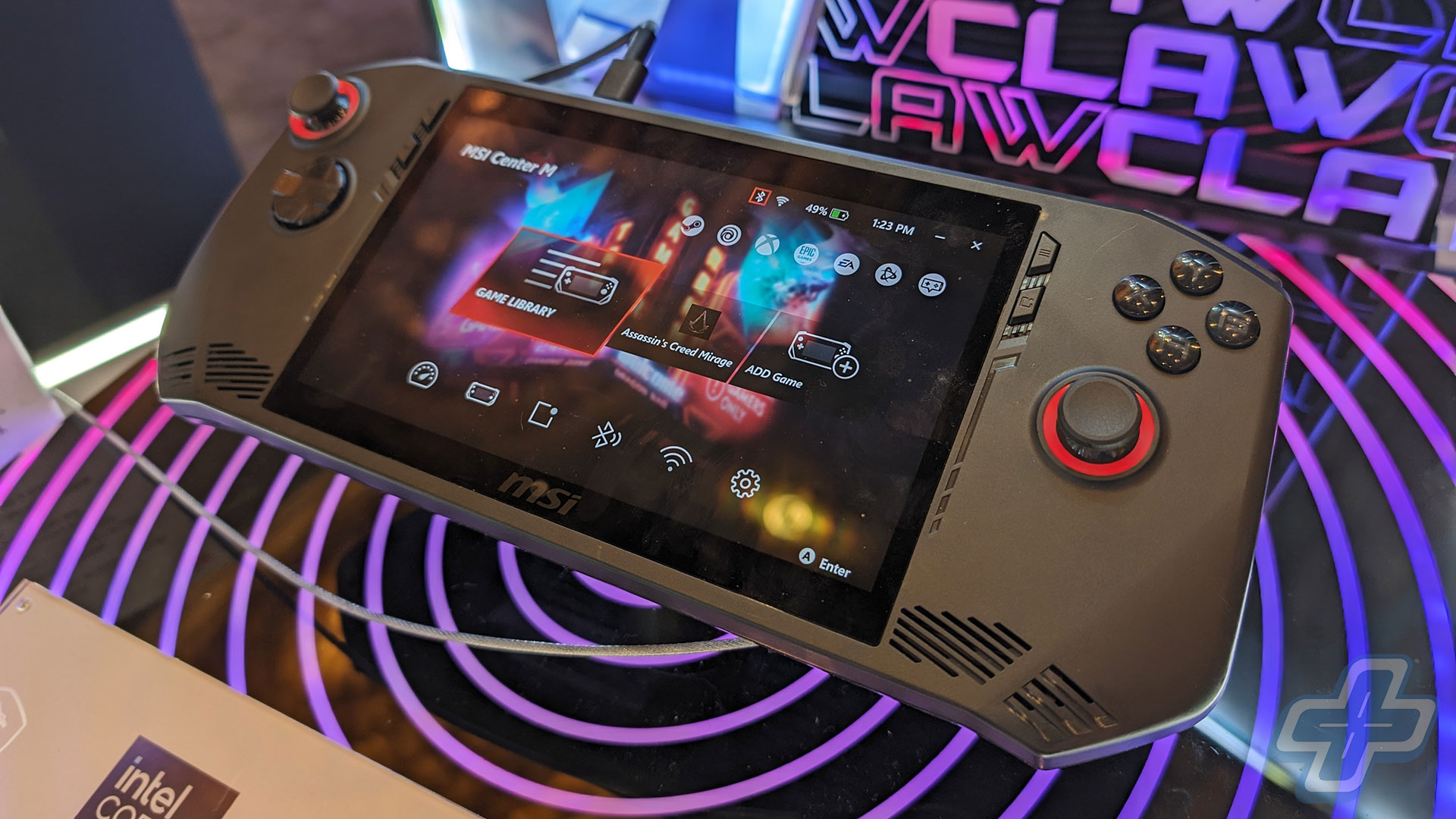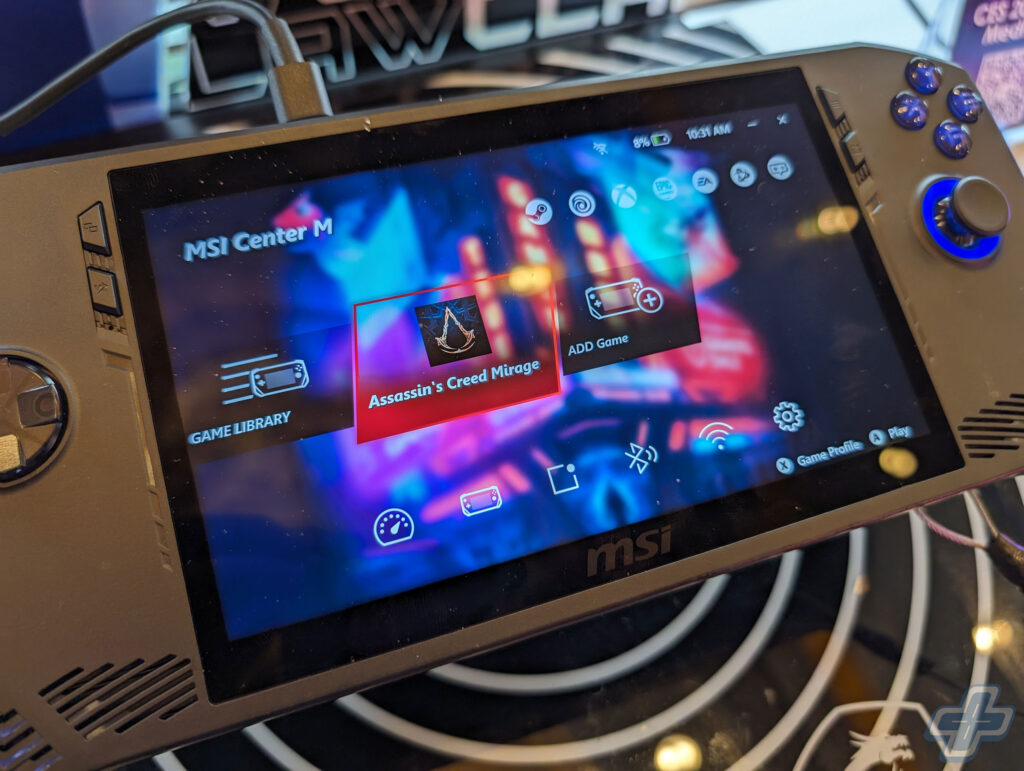One of the product debuts we’re most excited about at CES 2024 is the MSI Claw. Unlike other handheld gaming PCs in the market powered by AMD, such as the Steam Deck OLED, ASUS ROG Ally, and Lenovo Legion Go, the MSI Claw features an Intel Core Ultra processor and ARC graphics. We had an opportunity to visit MSI at CES 2024 and spend time with the Claw handheld, leaving us excited about another competent option in the market. After all, competition is always great and pushes each manufacturer to do bigger and better things.
The first thing we noticed was the MSI Claw’s overall design similarity to the ASUS ROG Ally, right down to the RGB rings around the thumbsticks. While we don’t have confirmation, we wouldn’t be surprised if the outer shell and display came from the same vendor given its likeness. MSI does boast that there’s a “robust HyperFlow” cooling system, but what’s most impressive is the large 53Wh battery. This is a noticeable increase compared to the ASUS ROG Ally’s 40Wh, and even larger than the Legion Go’s 49.2Wh and the Steam Deck OLED’s 50Wh. Since all the units were plugged in, it wasn’t possible for us to test the unit’s overall battery life. MSI claims the Claw offers a two-hour battery life under full workload.

If you’ve handled the ASUS ROG Ally before, the MSI Claw feels nearly identical in your hands. Under the hood however, it uses MSI Center M that includes a quick game launcher and easy access to key features and settings. The Claw also supports the MSI APP player, which allows users to also enjoy Android mobile games. Like the Ally, the Claw features a seven-inch IPS display (1920 x 1080) with up to 120 Hz refresh rate and 500 nits brightness. The similarities stop there however, because inside the Claw it’s all Intel components.
Buyers can choose up to an Intel Core Ultra 7 processor 155H and options between Windows 11 Home or Windows 11 Pro. The unit does come with 16GB LPDDR5 RAM and has a single NVMe M.2 2230 SSD slot. As mentioned before, it uses ARC graphics featuring up to 8 Xe cores and advanced XeSS technology to deliver smooth gameplay at 1080p resolution.
Unlike the Lenovo Legion Go, which has the detachable controllers, the MSI Claw doesn’t have any sort of gimmick. It’s essentially the ASUS ROG Ally with Intel hardware instead of AMD. Testing the various models that were available to us, the MSI Claw feels very snappy while in Windows and the menus pulled up without a hitch. We didn’t notice much of a difference in performance compared to the ASUS ROG Ally, and even MSI’s UI isn’t that different compared to ASUS’s Armoury Crate.

We did get to spend some of our hands-on time playing Assassin’s Creed Mirage and found its performance similar to what you’d expect from the ROG Ally or even the Steam Deck OLED. Visually, the display is crisp and responsive, but again, that’s something we already knew after our time spent with the Ally. Given the similarities between the two devices and the limited software we could test, it’s hard to say if the MSI Claw really offers something the ROG Ally doesn’t. What we’re more curious about is if the cooling enhancements addresses some of the ROG Ally’s issues, including the microSD problem.
MSI will also offer a desktop stand that doubles as a Thunderbolt hub, charging the handheld and providing an HDMI port and two USB connections. The base model of the MSI Claw, featuring the Intel Core Ultra 5 135H CPU and 512GB of SSD storage, will launch at $699. The more powerful model with the Intel Core Ultra 7 155H will cost $749 with a 512GB drive or $799 with 1TB storage. No release date has been confirmed, but MSI representatives told us it will launch in the coming months. We look forward to spending some significant time with the MSI Claw and comparing it to our ASUS ROG Ally.



















